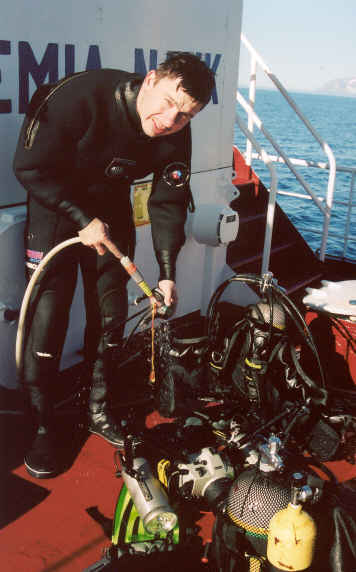Assoc. Prof. Piotr Kukliński
Department of Marine EcologyInstitute of Oceanology
Polish Academy of Sciences
Powstancow Warszawy 55
81-712 Sopot
POLAND
tel: (+ 48 58) 731 17 96
fax: (+ 48 58) 551 21 30
e-mail: kuki [at] iopan.gda.pl
- 2000 : M.Sc. at University of Gdańsk, Faculty of Biological Oceanography
- 2004 : Ph.D. at Institute Of Oceanology, Polish Academy of Sciences in cooperation with University Centre on Svalbard (UNIS)
- 2005 - 2007 Marie Curie Fellowship at the Natural History Museum in London
- 2004 - present : research scientist at Institute of Oceanology PAS, Department of Marine Ecology
- 2007 - present : scientific associate Natural History Museum in London
Curriculum Vitae:
- Bryozoa: taxonomy, ecology, biogeography
- Benthic rocky communities in coastal waters – community structure (species composition, diversity, interactions)
- Development of underwater photography as a research tool
Main scientific interests:
- Ecology of bryozoans from Svalbard waters.
- Diversity of encrusting fauna of temperate and Arctic fjords.
- Succession of fauna associated with kelps.
On-going projects:
- Kuklinski, P., Bader, B. 2007. Diversity, structure and interactions of encrusting lithophillic macrofaunal assemblages from Belgica Bank, East Greenland. Polar Biology 30: 709-717.
- Kuklinski, P., Gulliksen, B., Lřnne, O.J., Weslawski, J.M. 2006. Substratum as a structuring influence on assemblages of Arctic bryozoans. Polar Biology 29: 652 – 661.
- Kuklinski, P., Barnes D.K.A., Taylor, P.D. 2006. Latitudinal patterns of diversity and abundance in North Atlantic intertidal boulder-fields. Marine Biology 149: 1577 – 1583.
- Kuklinski, P., Taylor, P.D. 2006. A new genus and some cryptic species of Arctic and boreal calloporid cheilostome bryozoans. Journal of the Marine Biological Association of the United Kingdom 86: 1035 - 1046.
- Barnes D.K.A., Kuklinski, P. 2005. Bipolar patterns of intraspecific competition in bryozoans. Marine Ecology Progress Series 285: 75-87
Selected publications:
www.jakubkowalczyk.com Last update 31.30.2015
